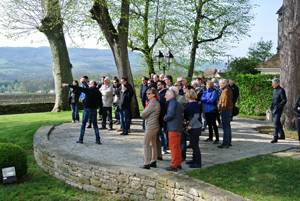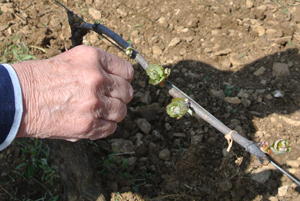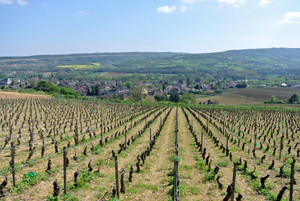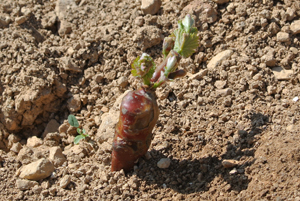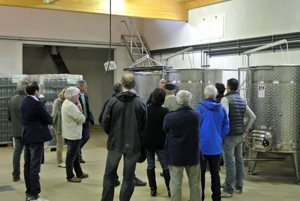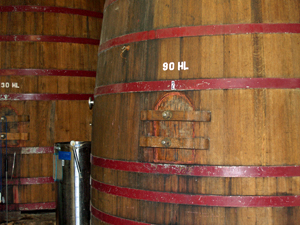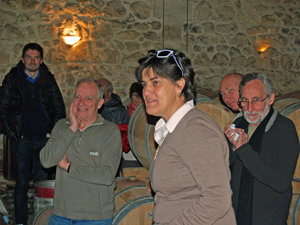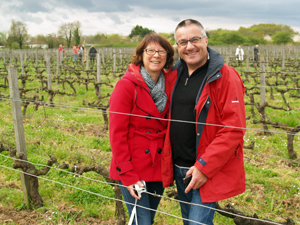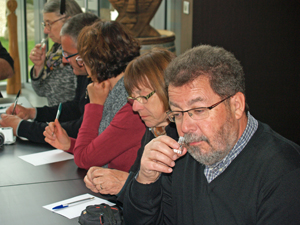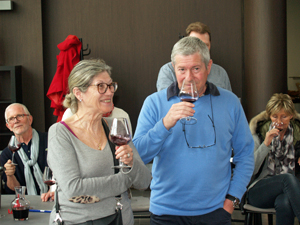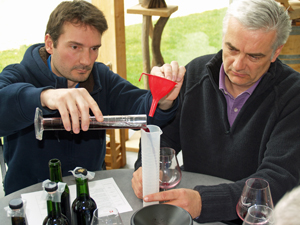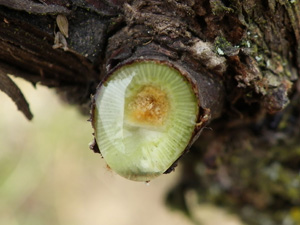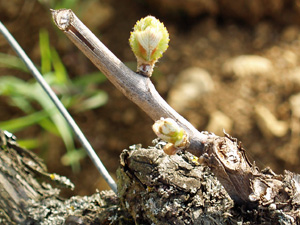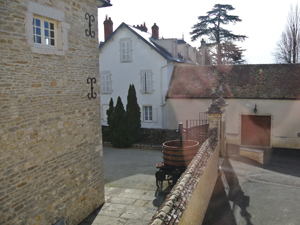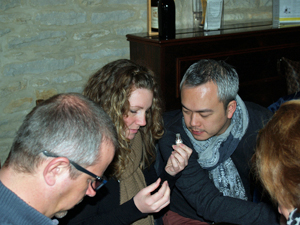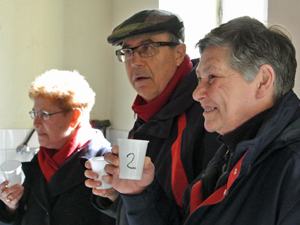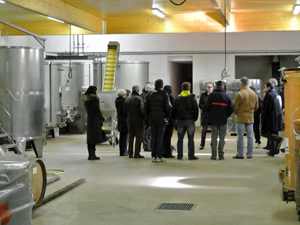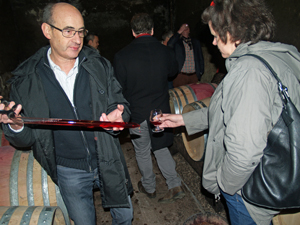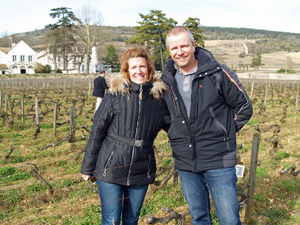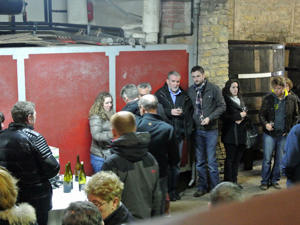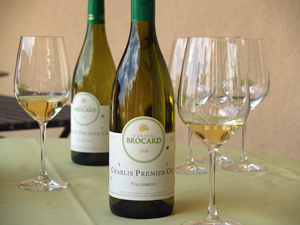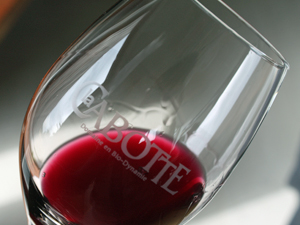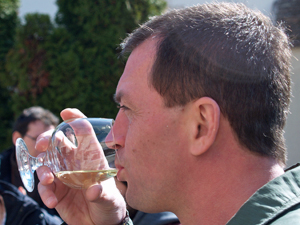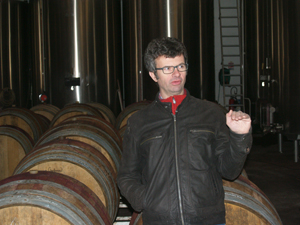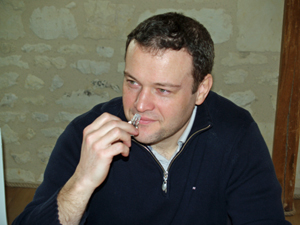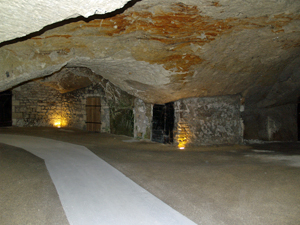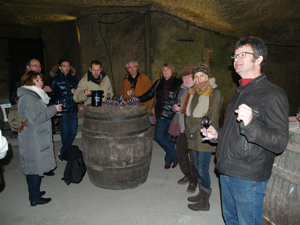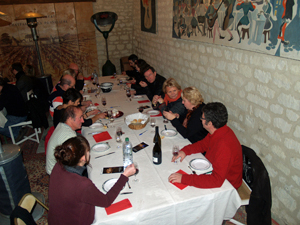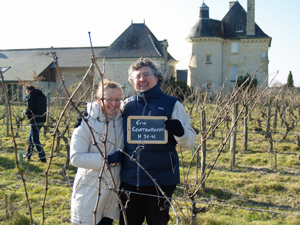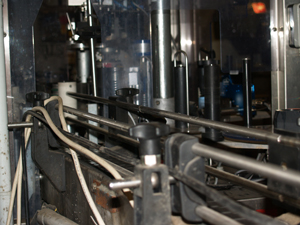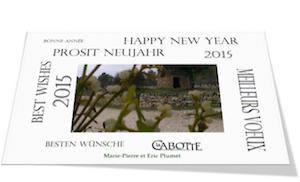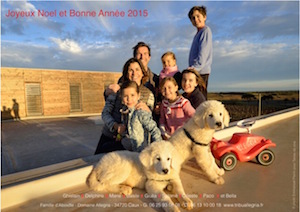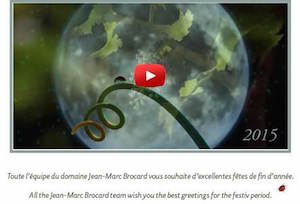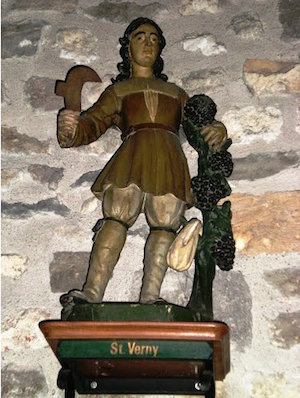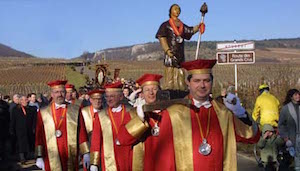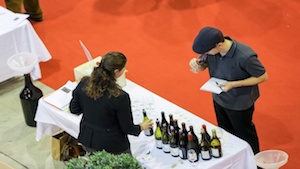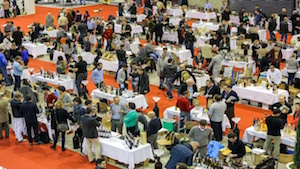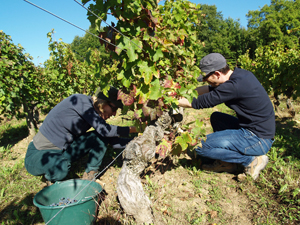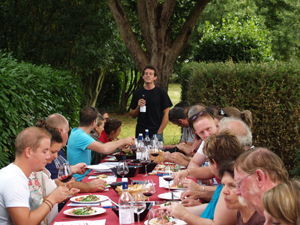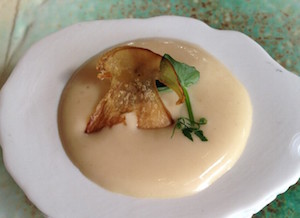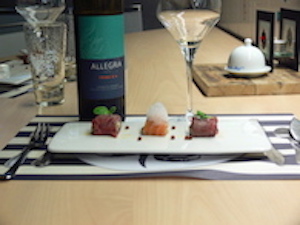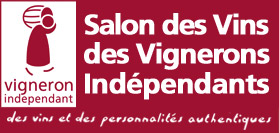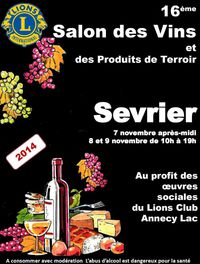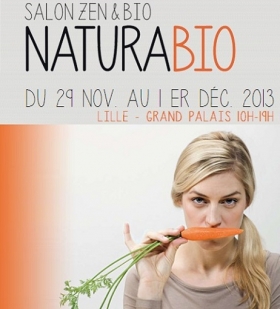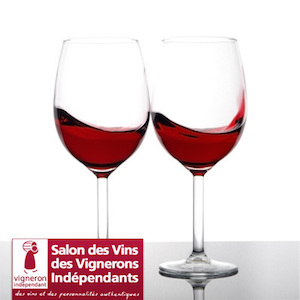We were spoilt by the fantastic weather for the latest of the Discovery Experience Days at Domaine la Cabotte. After a coffee and warm welcome by the winemakers, Eric & Marie-Pierre, we gathered outside for an introduction to the day that we were to spend together in the vineyard.
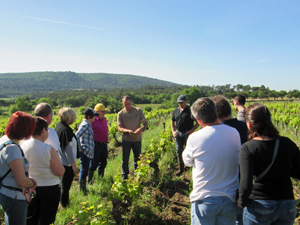
Eric & Marie-Pierre presented the winery and enlightened us on the local red and white grape varietals, the Massif d'Uchaux appellation and their approach to winemaking, before leading us out into the vineyard. Eric showed us the different grape varietals and how to tell them apart. In the background, the birds were singing, and then suddenly, a hare jumped up onto the dry stone wall!
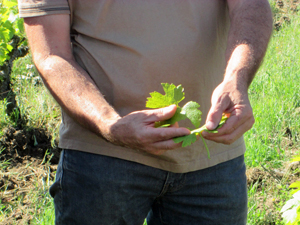
Eric & Marie-Pierre led us to a plot of vines that they had earmarked us to work on. They explained the importance of de-budding to reduce the number of buds per vine, and hence the number of grapes produced. This will help the grapes to have a better balance of sugar, acidity, tannins and aroma come harvest time. They showed us how to de-bud, and then in pairs, we each took on a row!
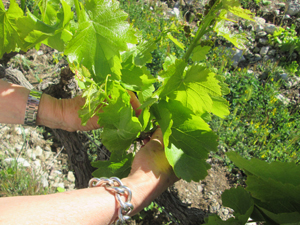
Once we had finished, Eric told us about the other work that has been keeping them busy in the vineyard since the last harvest, notably the pruning. After the de-budding will come the raising of the training wires as the vines grow taller and taller.
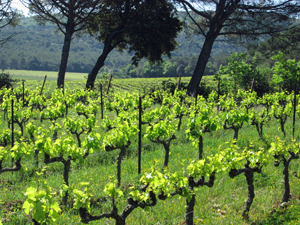
On our way back to winery, Eric showed us the enclosure where he prepares the biodynamic treatments used in the vineyard, and he introduced us to this fascinating topic. We started the wine tasting with a nice refreshing white and rosé wine, before sitting down to enjoy the lunch, that Marie-Pierre had put together specially for us.
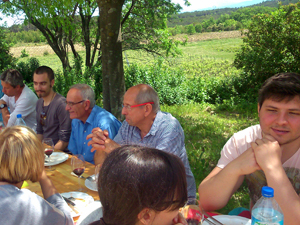
A deliciously seasoned tomato and rocket salad to start, accompanied by the Colline Cotes du Rhone 2014 red wine. For the main course, we savoured a traditional Caillette, served with potatoes and a tomato sauce, served with the Garance red wine. We then enjoyed the winery's Chateauneuf du Pape wine with cheese, before finishing with a red fruit clafoutis for dessert.
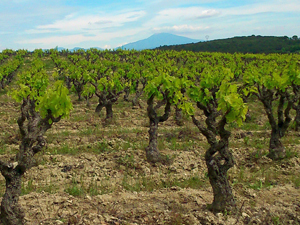
We then put our boots back on and headed off to the vineyard again, this time to meet our adopted vines! Once we had taken a few photos to immortalise the occasion, Eric explained a little bit more about the terroir and characteristics of the Massif d'Uchaux region and showed us the different types of soil, some more stony than others.
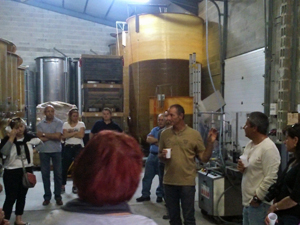
At the end of the day, we visited the chai where Eric gave us an overview of how the wines ferment and are worked during the vinification period. Many thanks to Eric & Marie-Pierre for this great day!
Other articles relating to the work in the vineyard



